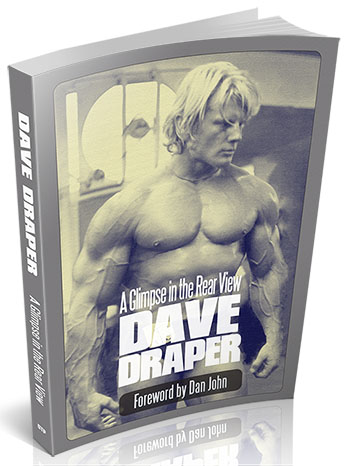Draper Exercise tips
Part two
Continued from Dave's Top 20 Exercises page
Prefix each workout with a concentrated midsection warm-up composed of any combination of crunches and leg raises and lightweight stiff-leg deadlifts and hanging leg-raises. Mix n’ match, intensify and moderate.
Once we're past the couple weeks of introductory exercises and we get the feel for the equipment, muscle resistance and our level of conditioning, we're ready to practice interesting exercise combinations that piece the workouts together. My favorite method: superset training, where two or more exercises that complement each other are performed one after another to enhance our output. This multi-set training not only condenses our workout time, but increases our productivity considerably.
With no down-time between sets, you become more involved in your training. There's no time for daydreaming, wishing you were somewhere else or becoming bored. In fact, a most desirable attitude of training develops, one that we wrongly think is reserved for athletes on the fringe of competition. This attitude of training is a valuable tool of confidence and provides a very real psychological benefit.
I’d alternate between two workouts, looking for consistency and time-plus-effort commitment channeled into four sessions a week. Considering these virtuous prerequisites, a Monday-Tuesday and Thursday-Friday scheme works well, giving you Wednesday and the weekend off for rest and relaxation, balance and order.
Aching joints causing a switch to lighter dumbbells? It is these things of the mind and body that make light weights perfectly heavy for muscle intensity (maximized tension within the muscle) and provoke muscle responses you’ve never experienced. Spared the mean, mind-numbing struggle demanded by the deliciously heavy weights, you can pinpoint your focus. The lighter weights allow you to create, discover and investigate the movements and the repetitions, move from set to meaningful set and exercise to purposeful exercise, providing vascular demand and pumping and burning and sweating without bounds.
High rep deadlifts for a strong back - a classic favorite of hardcore lifters with a generous heart. This is an excellent addition to a mundane routine. Gives it guts and charm. Don't forget - warm up and stay warm. Fuel up with a protein shake, and lots of water. You'll perform far better, stronger, longer, inspired by an awesome pump and high spirits with less chance of injury.
Plan for your free weight routines to have consistent framework, but vary from one workout to the next to accommodate overload, recovery, injury and mood.
Dumbbells are a better and healthier exercises than the barbells in many ways because the hands can rotate to accommodate the needs of the overused and abused rotator cuff or shoulder girdle. With 360 degrees of direction in each hand there's a need for a lot of muscle stabilizing and coordination - more demand for muscular health and growth.
Muscling your dumbbells in place is also a structure and skill building process. Don't drop them, don't clang or crack them at the top. Control them. Be nice.
Use dumbbells whenever you have a choice. The bar in all its rigidness prevents you from rotating the hands just enough to engage the pecs correctly and more fully. Dumbbells offer this advantage. Further, the unyielding hand position forces the mechanics of this joint-like apparatus to remain fixed throughout the entire exercise. This control causes an unnatural tracking and a subsequent impingement of tissue and nerve. Injury eventually rears its ugly head as power and intensity are applied. Does this ring a bell, bombers?
Another seldom reviewed benefit of dumbbell training is the powerful clean necessary to set the weights in place, and the fight to return them to the starting position and back in the rack upon exercise completion. This is called good old-fashioned work -- bull work -- that builds the body in functional and muscle and energy connected ways static exercise does not and cannot. Go for it.
I prefer free weights for overall muscle building as they require total control exercised by the user only. Machines are useful, do build muscle and strength when you squeeze the life out of them and are particularly valuable when injury or other limitations prevent free-weight application (the press machine for a shoulder with lateral limitations, for example). The oft-heard comment, “machines don’t build muscle,” is false and is probably based on the fact that the muscle action is isolated and guided, thus demanding less lateral control of the user -- limited muscle engagement.
I would be remise if I didn’t emphasize the need for heavy back work for thickness and density, as well as profuse lat work for width and dramatic taper. According to moods, urges and needs, I alternate between bentover barbell rows, dumbbell rows and seated lat rows for power and mass. I throw in widegrip pulldowns to the front as a secondary set to chest and shoulder pressing (supersetting).
Dave's book Brother Iron Sister Steel expands on this basic information
On this page you'll find more exercise routine suggestions
This link will take you to the main Getting Started page

